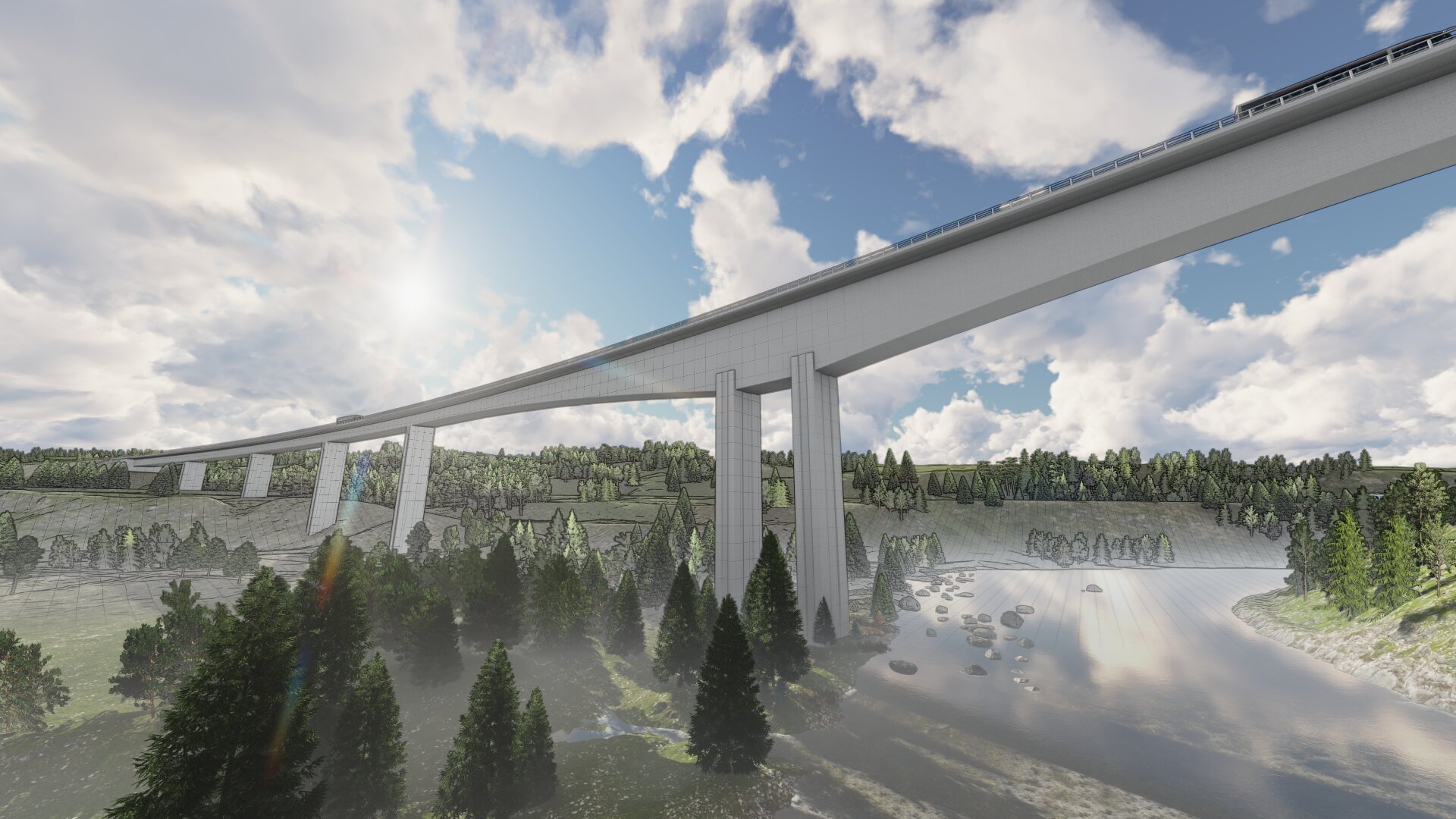Sweco - “Randselva Bridge”
Project name: Randselva Bridge
Category: Infrastructure
Company: Sweco
The World’s longest bridge built without drawings
Randselva bridge is a 634-meter-long cantilever concrete bridge being built without drawings, solely based on BIM-models.
Randselva Bru is a 634-meter long concrete box girder bridge near the city of Hønefoss, around 50km north-west of the Norwegian capital. It has a main span of 200 meters and six piers that range in height between five and forty-two meters.
The various complex geometric forms of the structure are being constructed using the balanced cantilever method. At its highest point, the bridge deck will stand 55 meters above ground level. The largest hammerhead will be 21 meters long, 8 meters in width and 14 meters in height, which is about the same height as a four-story building.
Four interesting facts
95% of all information is transferred to contractor by IFC-files.
Parametric design has been used extensively.
The BIM-model contains over 200'000 rebars and 250 posttensioning cables.
Designteam divided in 5 teams accross 5 countries (using Model Sharing).
Adapting new technologies
This project was selected as a local winner because it demonstrates adapting new technologies and it is challenging status quo. Sweco has created the first large bridge project using Tekla, Trimble Connect and also Sitevision to bring the 3D models to the real world. Furthermore, the customer has used Tekla Model Sharing in successful cross-border collaboration.
WINNER of the 2020 BIM Awards in the category: The Best BIM Project & Best Infrastructure Project
The benefits of using BIM and Tekla software
Motivation: The project owner, Statens vegvesen has seen a significant reduction in change orders when using BIM models as a basis for producing drawings. Eliminating drawings predictively means reducing the number even further.
Additional benefits on this project:
Better 4d (time) and 5d (cost) planning and control
Flexible parametric designs enable easy revision and speedy changes.
Reusable design with parametric design modeling.
Drawings are often country-specific, while BIM model information is more universal to make cross-border collaboration easier.
Challenge 1: The bridge has a very complex and slender geometry. Very heavy reinforcement combined with post tensioning cable anchoring makes certain areas very challenging to design.
Solution 1: Modelling all objects combined with clash detection ensures that the design is buildable. The 3d-model also enhances the understanding of scope of work at site.
Challenge 2: Randselva Bridge is the first structure that the contractor (PNC) builds without using drawings.
Solution 2: Trimble Connect provides a platform for IFC-files exported from the Tekla-model. Issue tracking in Trimble Connect helps shortening the reaction time when questions and issues arise at site. Trimble Sitevision also helps PNC understand the scope of work when planning the upcoming building stages.
Challenge 3: The bridge has over 200 pour phases. Producing individual bar bending lists for every pour phase manually would be time consuming and prone to errors.
Solution 3: As all reinforcement is modelled and labeled with a pour phase, the contractor (PNC) can automatically extract bar bending lists from the IFC export files at any chosen time, saving time and eliminating errors.
Length
634 meters
Drawings used
0 - Zero!
BIM model contains
200,000 rebars
Tekla Structures, Tekla Model Sharing, Trimble Connect
Participants that use the model
Sweco modeling teams:
Oslo, Norway – BIM model coordination and quality control
Copenhagen, Denmark – Parametric design, reinforcement
Tampere, Finland - Parametric design, form and post-tensioning
Katowice, Poland – Tekla reinforcement
Armando Rito (calculations) - IFC export files from Tekla
Multiconsult (3rd party control) – IFC export files from Tekla
Vegdirektoratet (Norwegian road authorities) – IFC export files from Tekla
Statens vegvesen (project owner) – IFC export files from Tekla
PNC (Contractor) – IFC export files from Tekla















